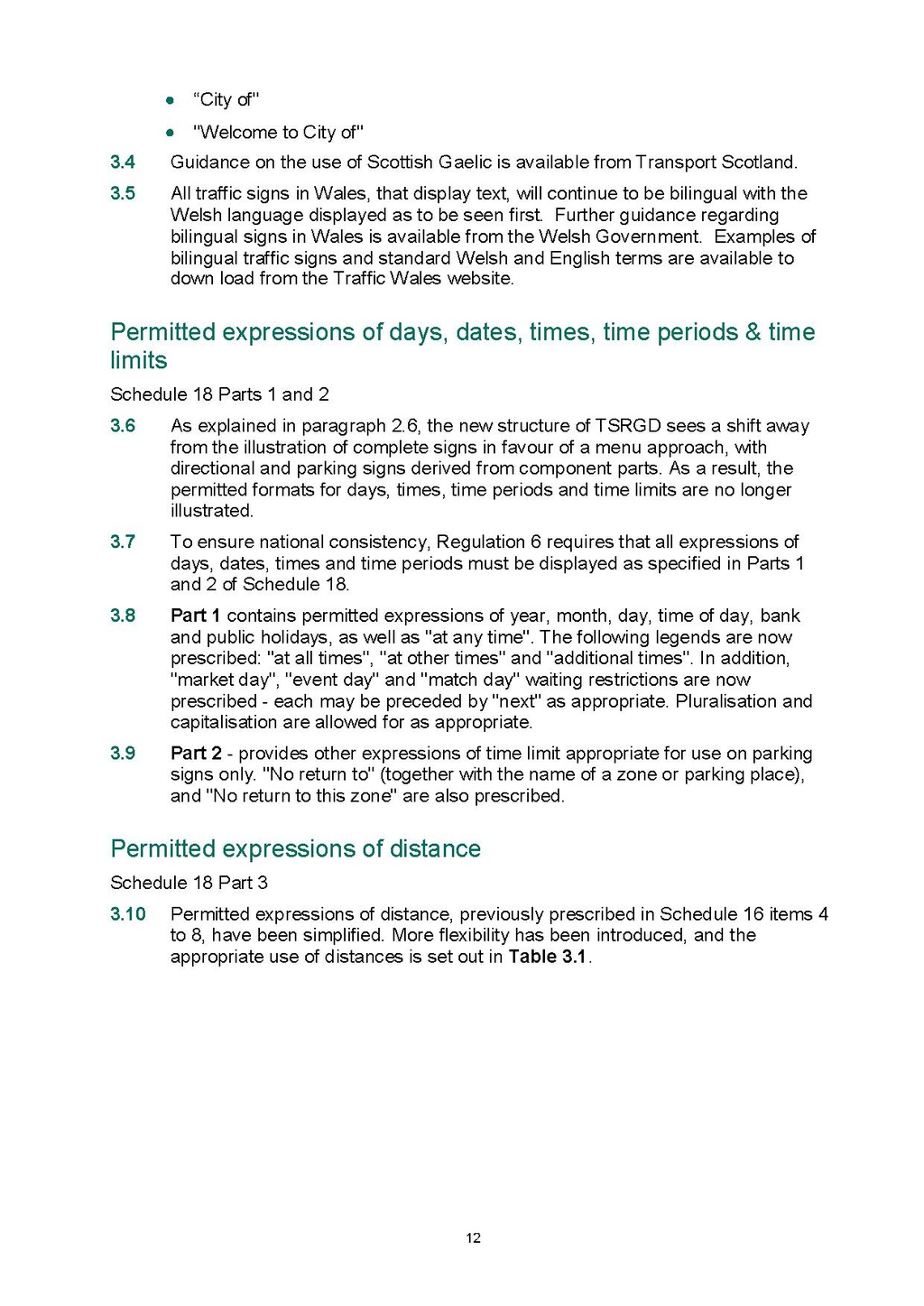This page has been validated.
3.3
- "City of"
- "Welcome to City of"
3.4
Guidance on the use of Scottish Gaelic is available from Transport Scotland.
3.5
All traffic signs in Wales, that display text, will continue to be bilingual with the Welsh language displayed as to be seen first. Further guidance regarding bilingual signs in Wales is available from the Welsh Government. Examples of bilingual traffic signs and standard Welsh and English terms are available to down load from the Traffic Wales website.
Permitted expressions of days, dates, times, time periods & time limits
Schedule 18 Parts 1 and 2
3.6
As explained in paragraph 2.6, the new structure of TSRGD sees a shift away from the illustration of complete signs in favour of a menu approach, with directional and parking signs derived from component parts. As a result, the permitted formats for days, times, time periods and time limits are no longer illustrated.
3.7
To ensure national consistency, Regulation 6 requires that all expressions of days, dates, times and time periods must be displayed as specified in Parts 1 and 2 of Schedule 18.
3.8
Part 1 contains permitted expressions of year, month, day, time of day, bank and public holidays, as well as "at any time". The following legends are now prescribed: "at all times", "at other times" and "additional times". In addition, "market day", "event day" and "match day" waiting restrictions are now prescribed - each may be preceded by "next" as appropriate. Pluralisation and capitalisation are allowed for as appropriate.
3.9
Part 2 - provides other expressions of time limit appropriate for use on parking signs only. "No return to" (together with the name of a zone or parking place), and "No return to this zone" are also prescribed.
Permitted expressions of distance
Schedule 18 Part 3
3.10
Permitted expressions of distance, previously prescribed in Schedule 16 items 4 to 8, have been simplified. More flexibility has been introduced, and the appropriate use of distances is set out in Table 3.1.
12
